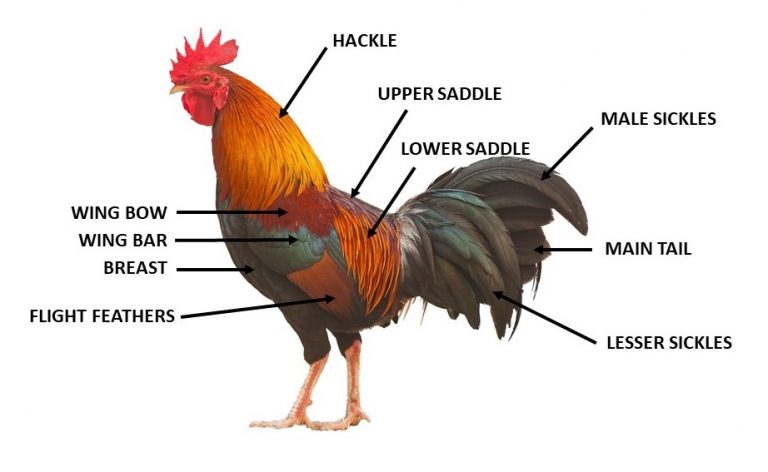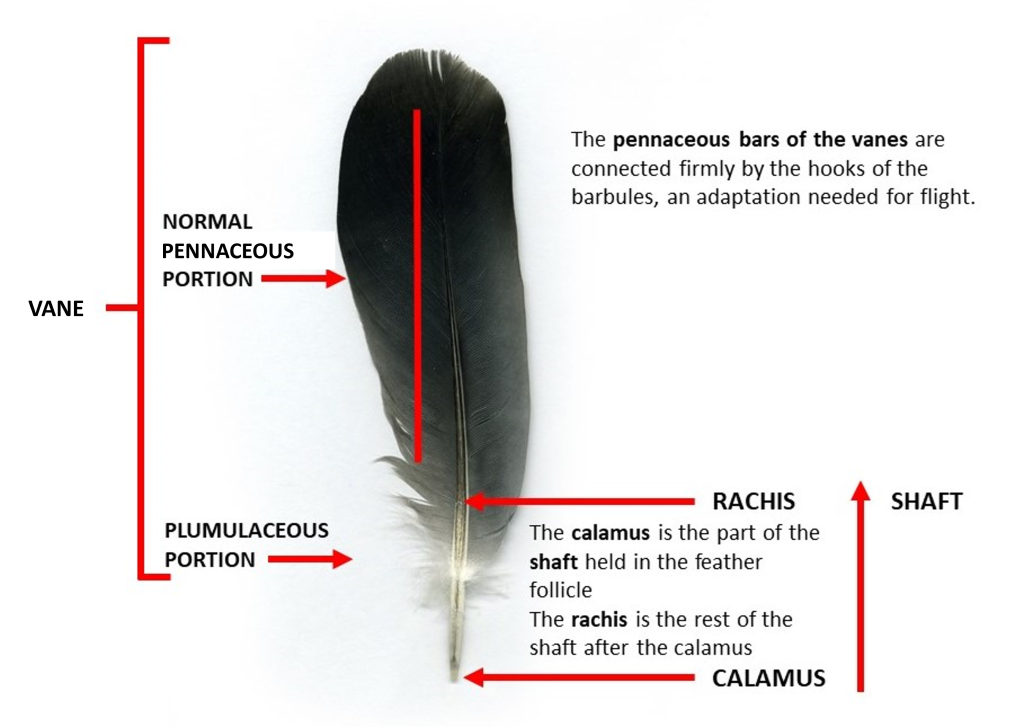Written by: Dr. Jacquie Jacob, University of Kentucky
Birds come in different shapes and sizes, but one thing they have in common is feathers. Feathers are unique to birds; that is, everything that has feathers is a bird; that is, everything that has feathers is a bird. Figure 1 shows feathers of various sizes, shapes, colors, and purposes on an adult male rooster.

Feathers play three main roles in birds’ lives:
- Feathers provide insulation, allowing birds to maintain their body temperatures in a wide variety of environmental conditions.
- Certain feathers are instrumental in allowing birds to fly.
- Because they come in different shapes and colors, feathers provide individual plumage that can serve to camouflage a bird or attract a mate.
The parts of a feather are shown in Figure 2. The shaft runs the length of the feather and is divided into the calamus and the rachis. The calamus is the part of the shaft held in the feather follicle on the skin of the bird. The rachis is the rest of the shaft after the calamus. At the junction of the calamus and rachis is the plumulaceous (downy) portion of the vane. The vane is the normal pennaceous (non-downy) portion.

Figure 3 is an electron microscope image of a part of a pheasant secondary flight feather showing the barbs and hooks. Flight feathers must be tough to withstand the rigors of flight. The bards on a flight feather are connected to adjoining bards in the same vane by the hooks on the barbules.
Figure 4 is an electron microscope image of part of a peacock eye feather. This feather is ornamental and not meant to withstand the forces a flight feather must endure. Spacing exists between the barbs, and the hooks do not hold the barbs together. The ridges on the barbs are part of the complex color-producing system present on peafowl.



